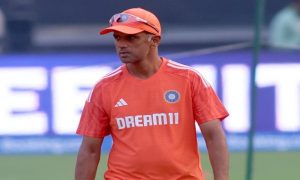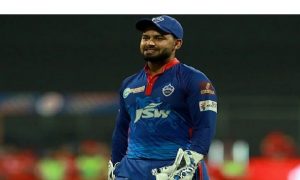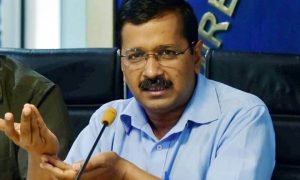Only two steps away from the ultimate glory, India cannot afford to put a foot wrong as they square off against a formidable England on a tricky Adelaide Oval track in the T20 World Cup semifinal on Thursday.
After the stunning loss to Ireland at the rain-soaked MCG, Jos Buttler sat defending his side. “This defeat doesn’t make us bad players. We have a very good squad, capable of winning matches and tournaments,” he said.
Imagine Pakistan captain Babar Azam saying that after the loss to Zimbabwe, or worse, South African captain Temba Bavuma after the loss to the Netherlands. It would be an astonishing statement for most people going around, but perhaps not so much for this English side. Unlike Pakistan to certain degree, and assuredly unlike the Proteas, Buttler and his mates have walked the talk. For a while now!
Back in 2015, English white-ball cricket had plummeted to the deepest chasm. Knocked out after losing to Bangladesh, they found new direction under Eoin Morgan and it has been a stunning ride since, including an ODI World Cup triumph at home in 2019. This is the first white-ball tournament England is playing without the inspirational Morgan. But the blueprint is still there, still very much the same, more so thanks to his good mate Buttler taking charge.
Meanwhile, for India, it has been quite a different story since 2015. Three semi-finals in four ICC white-ball tournaments since then – on first look, it makes for good reading. Then, you realize it is team India we are talking about, and suddenly this report card sticks out like an eyesore. Using the aforementioned analogy again, perhaps for a team like Pakistan and surely for South Africa, that card looks stupendous. Not for a behemoth like Indian cricket, nope.
If the Indian cricket team is not winning ICC silverware, then what is it even doing? That very question flummoxed Virat Kohli all the while he was captain, and it has done so to his successor as well. Rohit Sharma came into the job talking up his target of capturing an ICC trophy, either in 2022 or 2023, or preferably both. Well, we are here in the moment.
“It’s an opportunity for us to do that,” said Rohit Sharma, ahead of the semi-final, alluding to the missing silverware. “We have a long way to go yet, so we don’t want to get ahead. But we have played good cricket in this tournament, and for us, it has been a process. We will stick to that process.”
That word – process – is all about results. If the desired results aren’t forthcoming, you need to question it and make changes accordingly. It’s easier said than done in sport though, for you need to trust any particular course for some time. Indian cricket, particularly, can be obtuse about changing things over. And so, it took time, waited for things to work under Kohli, and they didn’t beyond a certain measure.
Its implication was grave for Rohit Sharma’s tenure. When he took over, immediately after the 2021 embarrassment, he had 12 months left to the current tournament and another 12 post that leading up to the 2023 ODI World Cup. Taking over from Kohli helped in a way because the core group of players stayed the same. The differentiation was in mindset, particularly regarding the T20 format.
When Sharma talks about process, these last 12 months are the subject in effect. Mainly, it is about the changeover in batting approach, and it has worked to a larger degree. You see Suryakumar Yadav dominating the batting charts, leaving his skipper, Kohli and KL Rahul in the shade. That is precisely it.
While Yadav has been particularly consistent in this time period, the others have had a different journey in their individualistic manner. Sharma’s form has been up and down. Kohli has fought a long battle and overcome it in spectacular fashion. Rahul has been unpredictable, even by his standards. Then, there are Hardik Pandya, Rishabh Pant and Dinesh Karthik, ever unpredictable, ever a matter of opportunity and game situation.
It puts the onus on India’s bowling to exploit the chink in England’s armoury, and there is one. Jos Buttler and Alex Hales have done most of the run scoring, and the middle order has struggled for momentum, partly due to conditions and partly due to fluidity in the batting order. Hit them hard, and get ahead of the game, is what the Irish taught everyone to do against England. Get the openers, and rip the middle order open, is the lesson Sri Lanka gave us. Can India’s attack, despite its many shortcomings, take advantage?
Like SKY, India’s bowling has also revolved around one particular name – Arshdeep Singh. Using his ability to move the ball both ways, and his penetration at the death, the young pacer has led the bowling charts for the Men in Blue. More than that, he has rejuvenated a pace attack that seemed lost in the absence of Jasprit Bumrah. The most pertinent pointer of it was when Rohit Sharma held back four overs for the young leftie in the rain-affected reduced-overs’ game against Bangladesh, also at the Adelaide Oval.
Challenges remain though, particularly in the spin department. Axar Patel has come a cropper in Australian conditions, and India is severely missing Ravindra Jadeja’s guile here. Patel has been rendered ineffective on pitches where there is no grip and turn, and is seemingly a one-track bowling machine. At Adelaide Oval’s shorter square boundaries, he is a ripe candidate for a hammering.
Could India bring in Yuzvendra Chahal? The game will be played on a previously used wicket, but then again, if it provides grip then the management will prefer Patel again. It makes R Ashwin India’s top spinner in this tournament, and he has surprised with his effort. The returns for either spinner haven’t been satisfactory, though.
This problem is accentuated if India’s new-ball pacers get hit. By using the shorter boundary in the powerplay to good effect, Litton Das showcased India’s main weakness. If Bhuvneshwar Kumar and Mohammed Shami get hit, then there might be no turning back. The experienced pacers missed a plan B the last time in Adelaide, and this has been their major weakness in the past as well. That they go up against power-hitting couple Buttler and Hales only makes the task tougher.
A game as tight as this can have many ebbs and flows. Especially when two title favourites like England and India showcase umpteen flaws on both bat-ball sides of the equation. Like the New Zealand-Pakistan semi-final, however, there is every hint this game could also come down to which team wins the powerplay battle.





































